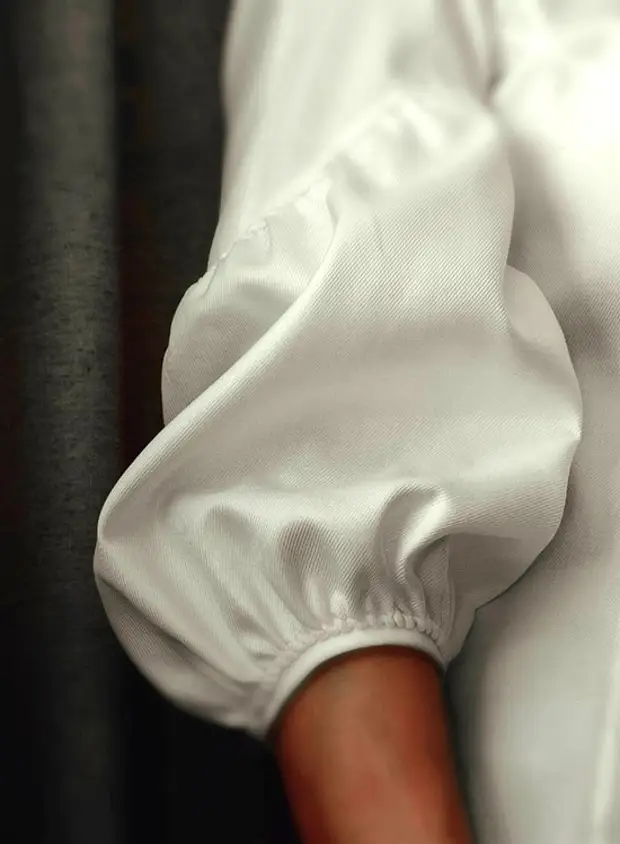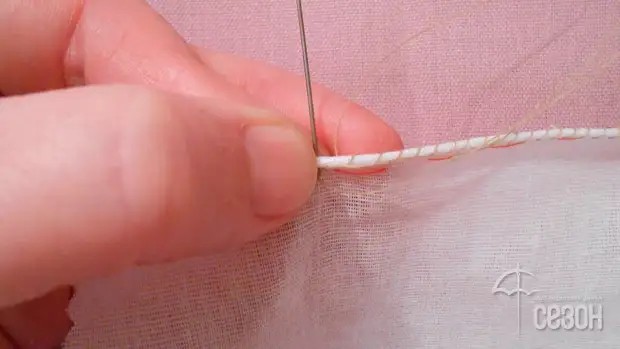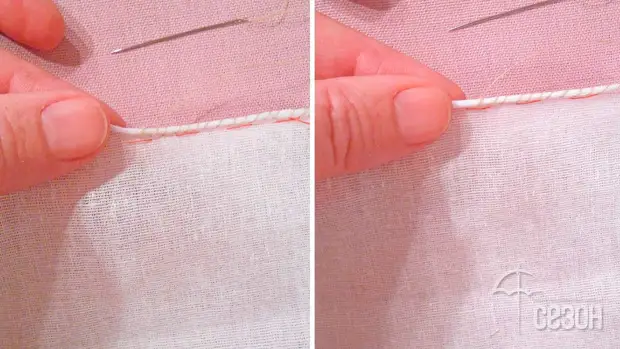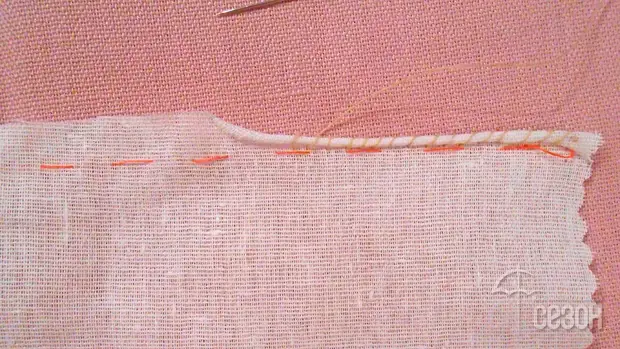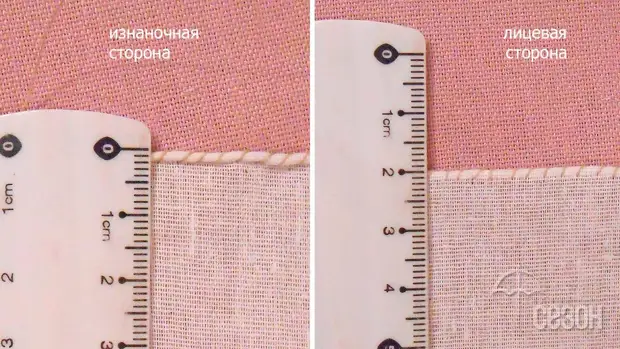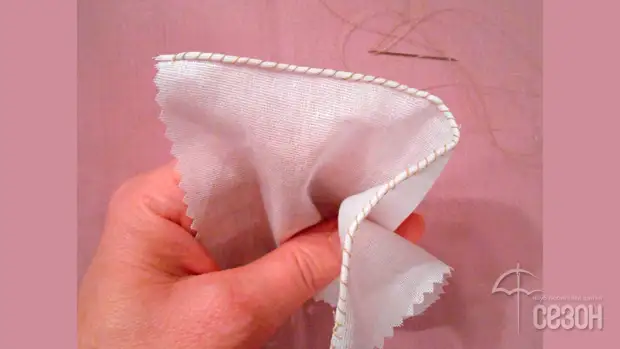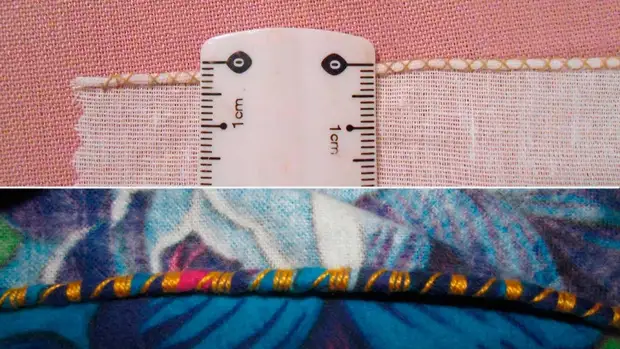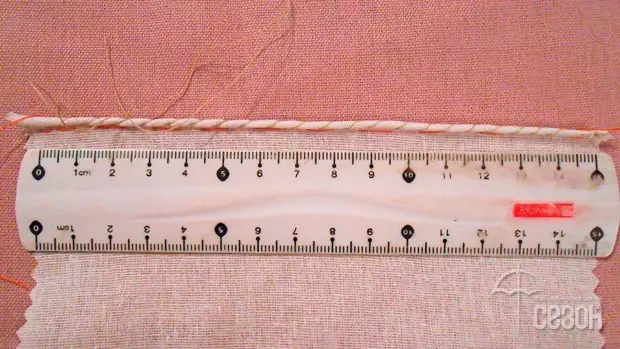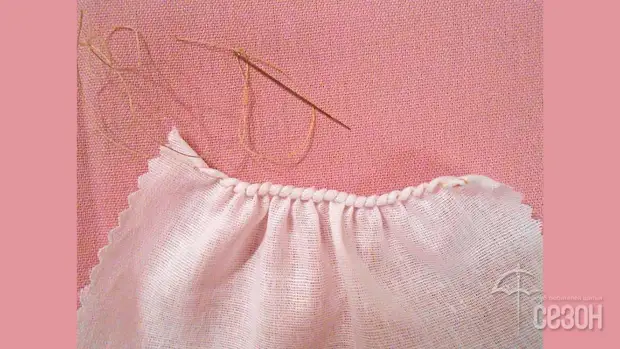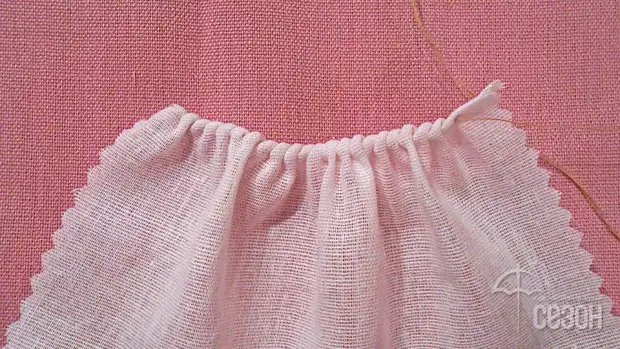Manual seam spin is the edge of the fabric, spinned with a roller and covered with oblique stitches. Seam can be performed in any direction of the thread (share, clarification, oblique). Let's figure out what the subtleties of its execution are.
Spin with passing
For the sample, a piece of fine cotton fabric and cotton threads No. 50, which is better to begin before work. On the sample of the seamhead, the needle take the guide and parallel to it cut the edge of the fabric. The distance from the edge to the guide is determined by the experienced way. It depends on the properties of the tissue and the desired roller thickness. Twist the edge into the suitable value of the desired value and determine the thickness of the roller. This will be the width of the fabric from the edge to the guide. In our example, the width was 8 mm. Such a sample preparation allows you to observe the same roller thickness.We twist and fix multiple stitches start working from the right edge and start to sew slash stitches to the right left with an interval between the stitches 3mm. Spit stitch, turning a thread around the entire roller and piercing fabric from myself. A needle rush by 1-2 mm above the guide. Stitches do not drag much so that the roller does not turn out to be pulled like a sausage.
When I pierce the fabric needle, keep the roller with big and index fingers of the left hand.
And when I pull the thread, then slightly press it from behind to work with the middle finger of the left hand.
This technique allows you to neatly lay slaughter stitches.
In our example, a contrasting thread is chosen for clarity. You will pick up the threads exactly in the color of the fabric.
During sewing, the roller is placed in two receptions. First, almost, but not to the end, we spin the cloth, and then tighten tightly. And so at each stitch or one or two. The fingers of the left hand are performed first to promote the movement - spin, then pick up the roller, and then the middle finger holds a thread at stretching.
If the fabric is slippery, elastic, to spin it will help wetting the fingers of the left hand about the wet sponge, located near the work. The photo below is clearly visible and understandable to the role of the guide.
We flash the sample to the end and remove the guide. On the edge of the sample, a swirling roller turned out, in our example its width was 1.5mm. A more convex roller will be from the side with which they sewed.
The roller turned out to be sufficiently dense, although it is only 6 mm tissue. Therefore, the edge will be elastic, not draped. This seam is suitable for a volan, the edge of which should not be accusing.
Double-pass twist
Performed on the basis of a twisting with a passing. We are wearing a roller once again oblique stitches, but in the opposite direction, from left to right. Ibles rush from yourself in the intervals between the punctures of the first passing. Stitches, in contrast to the first seam, tighten quite tightly.
The properties of the seam changed - it became denser, even smaller in width and completely reliable in the washing sock. Other variants of brazy stitches with different inclination are possible to create a decorative effect.
Twist with a passing into the assembly
For the details that we are going to subscribe, we wash the guide and perform a twist with a passing, well fixing the thread at the beginning of work. Take the thread strong and selling it with spinning. The difference: the step of the seam is chosen quite large 7-8 mm, it is possible and more - depends on the tissue and from the desired lungs of assemblies.
I stitched the edge of the fabric, pull the thread on the desired length, forming the assembly. Well fix the thread at the end of the work.
View of assemblies on the reverse side. The thread stretches very easily and neatly, and the twisted assemblies are well fixed on the thread.
Send the assembly to one to the camp of the main part. You can use any manual docking seam. In our example, the assembly is attached to the color piece of the eight of the fifth. Seam on both sides looks neat and beautiful.
It is this seam that the sleeve is assembled on a blouse, stitched completely manually.
Do not be afraid of the manual seams, after washing, it is enough to slightly shake the wet blouse, reap the assemblies and iron them almost will not have to.
